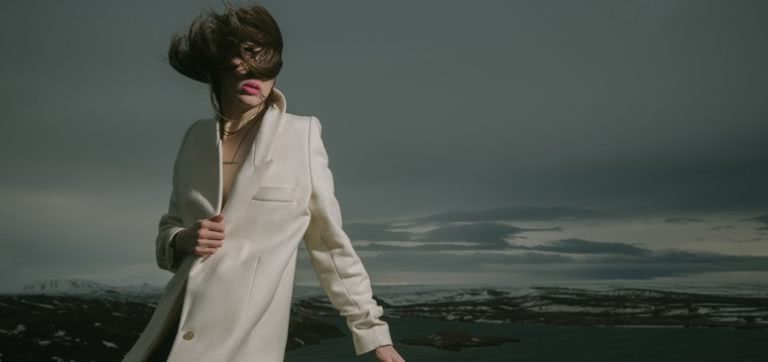Imogen Heap is a rare type of musician – the kind who pushes artistic boundaries, but does not shy away from being labelled ‘mainstream’ or ‘popular’. In fact, she relied on her considerable fan base to make her fourth full-length album,Sparks.
It traverses the boundaries between pop and musical experiment, using technology like 3D gloves and a specially developed app in the process. All of it is tied together by Heap’s elastic, ethereal voice. A classically trained musician, her foray into technology started early, when a music teacher locked her in a cupboard.
“I got to know how to use an Atari computer when I was 12 because I didn’t like my music teacher,” says Heap. “I was the only one in his class because no-one else would do music because he was so awful. So usually at the start of each class we had an argument, and I was being very obnoxious probably, and he kind of put me in this cupboard because he knew that I liked being there, where the computer was. I realised I could type in with a musical keyboard the different parts of all the different pieces and I could hear them all back and I could edit them – it was so amazing to me.”
Heap is softly spoken and self-assured, but doesn’t take herself too seriously. For many artists, the kind of creative risks she takes would be nerve-wracking enough to end in breakdown, or would lend themselves to a far more jaded outlook on the music industry. But there is an underlying integrity to Heap’s vision, which she is able to articulate very clearly. Part of that is to explore the outer boundaries of pop music through challenging how an album is made (that is, be isolated in a studio for a year, tour the album for three, have an existential crisis, rinse and repeat). Instead, Heap wanted this record to be made while she was also living her life – seeing friends, travelling and maybe even spending time with her boyfriend once in a while.
Thus Sparks started in a collaborative spirit, when Heap asked her fans to send in samples. They responded with over 900 sounds, which Heap converted into the groundwork for the single ‘Lifeline’.
“Those samples made the beginnings of the song, the rhythm and the textures. The sound of the match was sent in by four individual people. I thought that was interesting, because no other two similar sounds were sent in, but four people chose to strike matches. I like the idea that the whole album started with the sound of the spark.”
That momentum acted as a perfect antidote to procrastination. Making the album over four years with a song released more or less every three months, Heap travelled to places like Bhutan and Hangzhou – opportunities she normally would have to decline when in recording mode. ‘Climb To Sakteng’ consists mainly of field recordings from a hike in the Himalayas that Heap took while collaborating on the soundtrack for the documentary The Happiest Place.
“I wanted to use all of the sounds from that place – I used the crunching of snow and yak bells and vocalist Sonam Dorji singing a traditional folk song. I took that and turned it into an instrumental piece. His job is to protect all of the folk music from the area before all the memory of it vanishes, and I thought it was just so perfect and had a real story.”
As diverse as these influences are, and as ambitious as the album concept is, Heap’s unmistakable lyrics are what lend the most coherency to the songs as a body of work. While her sound has developed significantly since 2009’s Grammy Award-winning Ellipse, and even further from her breakout track ‘Hide And Seek’ from way back in the days of The O.C., her general approach to writing hasn’t changed. It is what makes Heap’s work feel intimate, even while trying to challenge the listener to broaden their expectations of what pop music is.
“Every time I write a lyric, I am always trying to dig out something, trying to get somewhere in the back of my psyche, trying to connect with a deeper emotion,” she says. “I don’t spend maybe as much time as I should with my friends, so in order to work things through I go to music and I go to lyrics writing. I’ve always been a bit of an introvert in many ways, even though I look like I’m not.”
This melding of the deeply personal and the experimental is most obvious on thetrack ‘The Listening Chair’. It is a song in which each minute represents seven years of Heap’s life, and is going to be a work in progress until she dies. Her last minute has the weird, affecting line, “When did I stop eating bread and cheese? I love cheese / I want to have children / But I don’t want to have children, you know?”
As a process, writing these lyrics seems almost as good as therapy. “It took me to a place that was quite a difficult place and forced me to see patterns and places where possibly I was going wrong. But the good thing is, I kind of realised that I wanted children, and that was what I wanted the next minute of the song to be about. So when I’m 42 in seven years from now I’m sure it’s going to be about children.”
Sparks out Friday October 10 through Megaphonic/Cooking Vinyl.



































